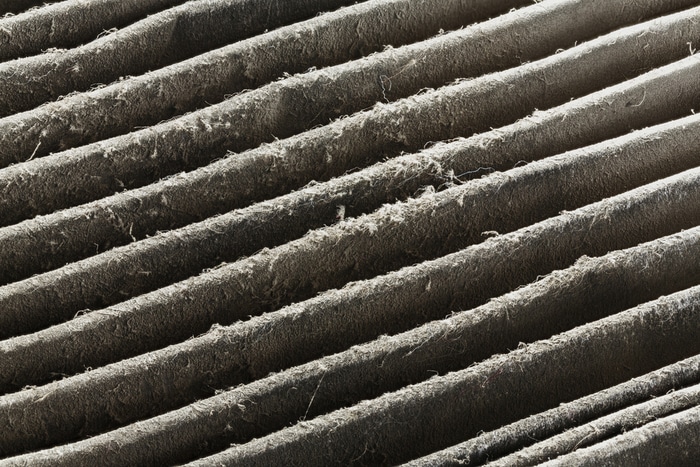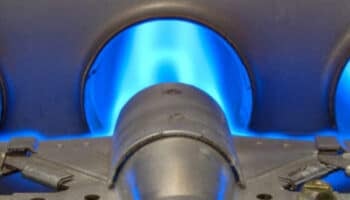Is there soot buildup in your furnace?
That sucks! Soot not only affects your furnace’s efficiency; it can also pose potential safety hazards.
Don’t worry, though. You’ve come to the right place to fix the issue.
To prevent furnace soot buildup, please clean the air intake vents, check the burner and heat exchanger, and ensure you’re using the right fuel. It’s also important to replace the air filter and clean the flue.
Read on to get rid of your furnace’s soot!
Soot Buildup in Your Furnace? Try This!
In this section, I’ll guide you through the different ways you can prevent and clean soot buildup in your furnace.
Keep in mind that soot buildup typically indicates incomplete combustion, which can affect your furnace’s performance and pose a serious health risk. Soot can obstruct the flow of flue gases, potentially leading to carbon monoxide poisoning. Addressing any soot buildup immediately is essential to keep your family safe.
Are you ready to fix the problem? Let’s get started!
#1 Clean The Air Intake Vent
When I notice soot buildup in a furnace, I always start by checking the air intake vent.
The intake vent is typically located on the exterior of your home and is responsible for allowing fresh air from the outside to enter the furnace. This air is needed for the combustion process that powers your furnace.
Let me explain. Your furnace heats up due to a combustion process in which a fuel source, typically gas or oil, combines with oxygen to generate heat.

Unfortunately, if the intake vent becomes clogged, it can prevent oxygen from flowing into the furnace, leading to incomplete combustion. As a result, soot will start to build up in the unit.
But don’t worry, cleaning the air intake vent is very simple. You’ll just need to:
- Turn off your furnace to ensure your safety while cleaning the vent.
- Locate the vent. In most modern homes, the vent is typically a PVC pipe located on the exterior.
- Remove any visible obstructions and use a vacuum with a long hose attachment to clean the intake vent. You can also use a long, flexible brush.
If you notice soot buildup even after cleaning the air intake vent, then you’ll need to inspect other internal components, such as the burners and heat exchanger. Read on to learn how to do it.
#2 Clean The Burners
In my experience, issues with the furnace burners can also explain why there’s soot buildup.
The burners combine the air and fuel and ignite them to generate the heat that warms your home. Unfortunately, a dirty or faulty burner can result in incomplete combustion, leading to soot buildup.
Follow these simple instructions to inspect and clean your furnace burners:
- Turn off your furnace and let it cool down. It’s also important to shut off the gas supply.
- Access the burners, which look like a series of metal tubes connected to the gas supply. To access the burners, you’ll need to remove some panels and disconnect wires, so please refer to the manufacturer’s manual for detailed instructions.
- Use an inspection mirror and a flashlight to see the front side of the burner. If you notice any signs of damage, such as rust, cracks, or warping, you must get a replacement. However, if there’s dirt or soot buildup, follow the next steps.
- Use an old toothbrush to clean the burners gently. If necessary, rinse them with water and let them dry. You can also use an air compressor.
- While you’re at it, make sure to inspect the gas line for any obstructions in the holes. If necessary, clean them as well.
- Put the burners back in place and reassemble all the components.
Once you’ve cleaned the burners and removed the soot buildup, turn the power and gas back on. Then, test your furnace.
Remember that if you’re uncomfortable cleaning your furnace components, it’s best to call a professional.
#3 Use The Right Fuel
If there’s soot buildup in your oil furnace, you’ll need to make sure you’re using the right type of fuel.
You see, when the thermostat indicates that the room temperature is below the desired setting, furnaces draw in the cold air from your home and heat it in a combustion chamber through the burning of a fuel. Then, the warmed air is circulated through a series of ducts using a blower or fan.
The efficiency of the combustion process depends on the quality of the fuel being used. So, if you have an oil furnace, it’s crucial to ensure you’re using the right fuel, as the quality of the heating oil can vary.
If you use lower-quality oil, it can lead to incomplete combustion and soot buildup. Therefore, it’s crucial to read the manufacturer’s manual and follow the recommendations.
It’s also important to purchase the heating oil from a reputable and certified supplier.
#4 Check the Heat Exchanger
When a furnace has soot buildup, my usual advice is to inspect the heat exchanger.
The heat exchanger is a set of coils inside the furnace responsible for heating the air that gets blown into your home. Unfortunately, issues with the heat exchanger can disrupt airflow and lead to incomplete combustion. As a result, soot will accumulate.
To inspect the heat exchanger, you’ll need to turn off the furnace and gas supply. Then, remove the necessary panels. Try using a flashlight and a mirror to look for any visible signs of damage.
Warning: If you notice a crack or other type of damage on your furnace’s heat exchanger, you must call an HVAC technician immediately. A damaged heat exchanger can allow carbon monoxide enter your home, posing a safety risk to you and your family.
#5 Replace The Air Filter
If your furnace has soot buildup, I also recommend checking the air filter.
The air filter is responsible for trapping dust particles, dander, and other contaminants to improve indoor air quality. If the filter gets clogged, it can restrict airflow, leading to incomplete combustion and other performance issues. When the fuel doesn’t burn completely, it creates soot.

You’ll need to clean or replace the air filter to prevent soot buildup. Here’s how to do it:
- Turn off your furnace and remove the front cover.
- Locate the air filter, which is typically on the vent. The exact location will vary depending on your furnace’s model, so please read the manufacturer’s manual.
- Carefully slide the filter out of its compartment and clean it with a vacuum or old toothbrush. If necessary, rinse it with water and let it dry completely.
- If the furnace has a disposable filter or you notice any visible signs of damage, please get a replacement.
- Install the cleaned or new filter. Just make sure the arrows in the frame point in the direction of airflow.
- Reattach the front cover and turn your furnace back on.
You should inspect, clean, or replace the air filter every 1 to 3 months. Proper maintenance not only prevents soot buildup but also enhances indoor air quality and ensures your furnace operates efficiently.
#6 Clean The Flue
Now, it’s time for us to inspect your furnace’s flue.
The flue is responsible for venting out harmful gases, such as carbon monoxide, produced during combustion. Unfortunately, soot buildup can restrict the proper venting of these gases and cause them to flow back into your home, leading to safety hazards. Therefore, it’s essential to inspect and clean the flue immediately.
First, turn off your furnace and check the exterior cover. If you find a nest or any other obstructions, carefully remove them.
Consider purchasing a long, flexible brush to clean the flue’s interior. You can also use a vacuum to remove any excess soot buildup.
Also, don’t forget to inspect the flue’s interior for any signs of damage, such as cracks.
Keep in mind that dealing with your furnace’s flue can be a bit tricky. Therefore, if you lack experience, hiring a professional to inspect the system safely is always best.
Wrapping Up: Your Guide to a Soot-Free Furnace
Hopefully, now you know how to prevent and clean soot buildup.
Remember that soot typically forms due to incomplete combustion, so it’s crucial to clean the air intake vent and burners, make sure you’re using the right fuel, and check the heat exchanger. It’s also important to clean the air filter and flue.
Thank you so much for taking the time to read this article. If you ever experience a different issue while using your furnace, please check out our related posts below.
Have a great day!








